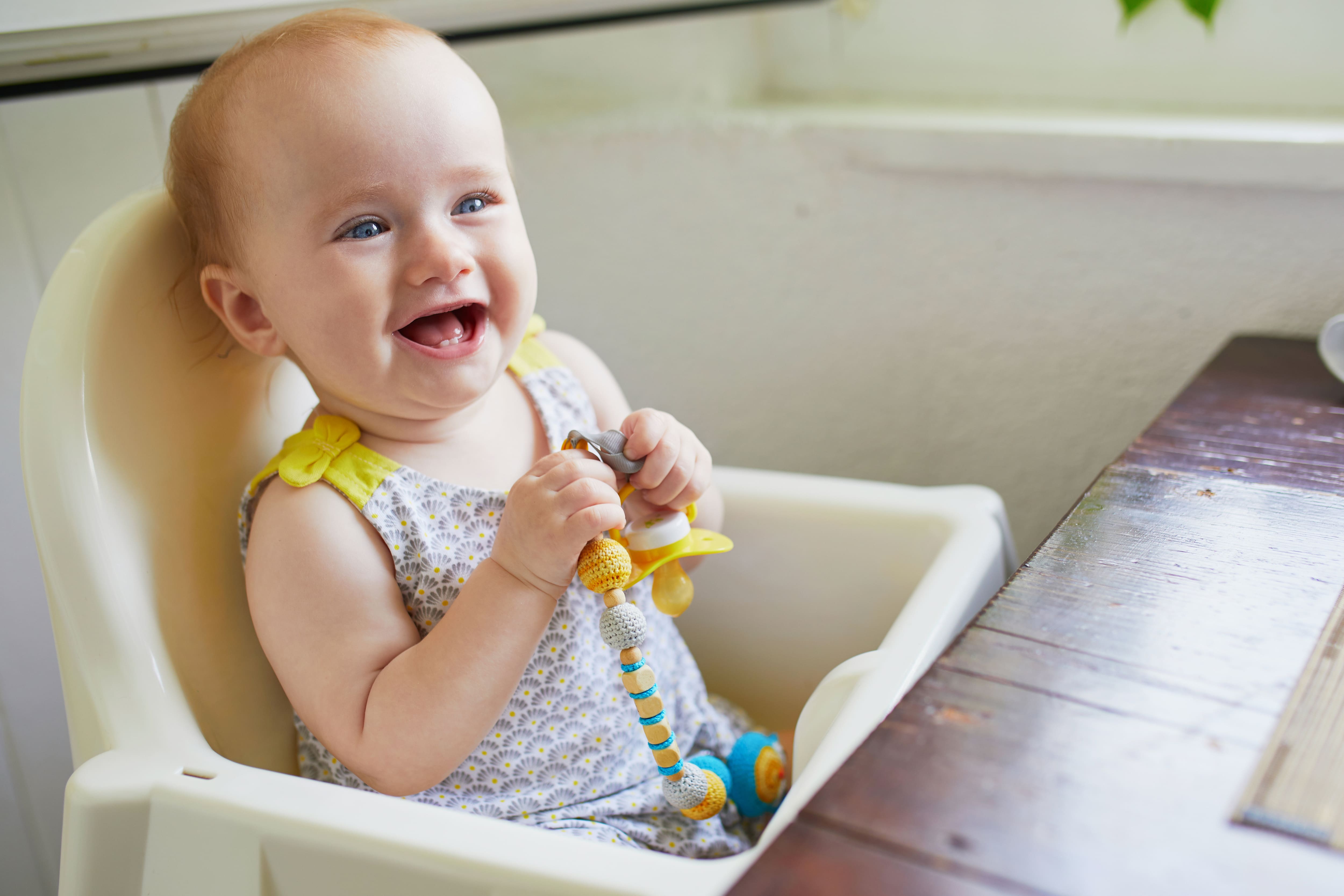What Is a Pacifier?
A pacifier mimics a nipple and helps calm your baby when they're crying and not hungry. Aside from soothing your child and providing you both comfort, some other benefits include:
- A pacifier can help premature, tube-fed babies learn to use a bottle
- It reduces the risk of Sudden Infant Death Syndrome (SIDS)
When Should Your Newborn Begin Using a Pacifier?
The Mayo Clinic recommends waiting until your newborn is 3 to 4 weeks old before you give them a pacifier. That should give your little one enough time to get used to a nursing routine. Introducing a pacifier any earlier could disrupt breastfeeding.
Where Are The Directions On This Thing?
For such a simple device, there are quite a few important dos and don'ts to keep in mind, like:
- One-piece pacifiers are the safest
Many traditional pacifiers come in three parts – the nipple, the mouthguard, and the handle. The mouthguard is meant to keep your baby from swallowing any pieces and choking. If the pacifier comes apart, then that mouthguard doesn't do much good. Getting a pacifier that's one piece is your safest option. - Clean the pacifier
You may have heard that exposure to germs is good for your infant to build up a strong, healthy immune system – but it can take about 6 months for their immune system to mature. Boil their pacifier in hot water or run it through the dishwasher regularly for the first half-year. Then you can rinse it with soapy water. - Don't dip it in sugar
Sure, it will make them enjoy sucking on the pacifier more, but sugar will negatively affect their oral and overall health. - Don't force it
If your baby doesn't want to suck on the pacifier, your baby is the boss. Gently rocking your newborn and or helping them find a more comfortable position will be more helpful to your cause. - Don't replace feeding with a pacifier
If your baby is hungry, feed them. Only use a pacifier when they aren't hungry, and no amount of love and affection will keep them from crying. - No necklaces
Don't put the pacifier on a loop of string and hang it around their neck. Even if it's meant to hang around your neck for easy access, it can cause unintended dangers for your baby. - Replace it
If there are signs of wear and tear, get a new pacifier to ensure your baby doesn't swallow anything you don't want them to. - No chewing
If your baby chews on the pacifier, take it away.
How Long Should Your Baby Use a Pacifier?
Prolonged use can result in tooth misalignment and increases the risk of ear infections. When your child is about one year old, talk to your healthcare professional about the best time to wean your baby off pacifier use.
How Do You Wean Your Baby Off Their Pacifier?
The longer your baby uses a pacifier, the more dependent they will be on it. One way to get your baby to stop using it is to not wean at all. Babies tend to think if they can't see it, it doesn't exist. Take it away for a week and see what happens. The first few days will be the most difficult, but you may be surprised at the results.
If you want a more gentle approach, here are some steps you can take to casually wean your baby off of pacifier use within about a week to ten days:
- If they use it day and night, limit their use to night time.
- If your baby is teething, that may be another exception you can make.
- Offer a toy or a game instead.
- Try replacing the pacifier with a healthy treat.
- Keep your baby busy for a week. Push them in their stroller, set up a playdate, go for a drive – anything to distract them from wanting to suck on their pacifier.
There's no perfect time to wean your baby off using a pacifier, but the consensus is that 1 year old is ideal, and 3 years is the absolute limit. Most infants will stop using a pacifier on their own by that time. The best thing to do is to speak to your pediatrician about your child's individual needs. They'll be able to guide you with advice tailored to your baby that will help you both rest easy.
Oral Care Center articles are reviewed by an oral health medical professional. This information is for educational purposes only. This content is not intended to be a substitute for professional medical advice, diagnosis or treatment. Always seek the advice of your dentist, physician or other qualified healthcare provider.
ORAL HEALTH QUIZ
What's behind your smile?
Take our Oral Health assessment to get the most from your oral care routine
ORAL HEALTH QUIZ
What's behind your smile?
Take our Oral Health assessment to get the most from your oral care routine
Join Us
Get the best of your oral health routine and take it to the next level with expert advice, recommendations, products and solutions and special offers.
Join Us
Get the best of your oral health routine and take it to the next level with expert advice, recommendations, products and solutions and special offers.















